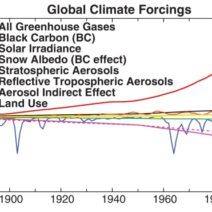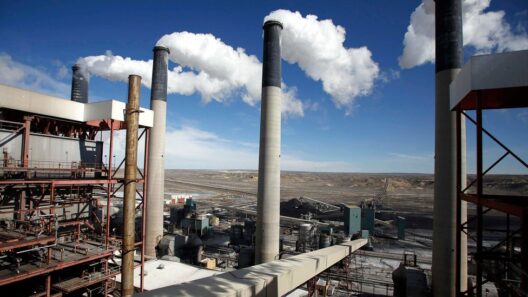As the world grapples with the impending specter of climate change, hydrogen has emerged as a potential linchpin in the quest for cleaner energy. Often hailed as a “green” alternative, hydrogen holds the tantalizing promise of mitigating greenhouse gas emissions. However, is it genuinely the panacea it’s portrayed to be, or does it come with an insidious ecological footprint of its own? This inquiry leads us to a pivotal challenge: can we realistically assess hydrogen’s impact on global warming?
To understand hydrogen’s role in the energy landscape, we must first delve into the various methods of hydrogen production. The most prevalent methods include steam methane reforming (SMR) and electrolysis. SMR, which utilizes natural gas, is responsible for a substantial carbon footprint due to the emissions associated with fossil fuel extraction and processing. In contrast, electrolysis—particularly when powered by renewable sources such as solar or wind—offers a semblance of environmental benefit. Yet, this process is not without its energy demands and downstream impacts.
Now, let us ponder a question: if the energy required for electrolysis draws from fossil fuel sources, does it truly qualify as “green”? This is a critical consideration in the hydrogen discourse. The indirect emissions tied to the electricity consumption for producing hydrogen can significantly diminish its purported environmental advantages.
Production methods aside, the distribution of hydrogen is fraught with its own complexities that contribute to its overall environmental impact. Transporting hydrogen gas—whether via pipelines, trucks, or in cryogenic liquid form—can lead to energy losses. Every step in this convoluted supply chain is a potential source of emissions, primarily from the energy consumption required for compression and transport. Further complicating matters, the infrastructure necessary for hydrogen distribution is often lacking, requiring substantial investment and development.
Moreover, it is paramount to consider the end-use applications of hydrogen. The fuel cells, which convert hydrogen back into electricity, are often highlighted as a cleaner alternative to traditional combustion engines. However, the efficiency of these systems can vary, and they are not immune to their share of emissions during manufacturing and operation. Thus, when evaluating the emissions profile of hydrogen as a fuel source, one must analyze the entire life cycle—from production to end use—to arrive at a comprehensive assessment.
Hydrogen is also heralded as a potential champion in sectors that are notoriously difficult to decarbonize, such as heavy industry and shipping. The logic is compelling: hydrogen can replace fossil fuels that traditionally power these sectors, which could lead to significant reductions in carbon output. Nevertheless, the feasibility of this transition remains contentious, and systematic advancements are imperative. Ultimately, the question looms: is our investment in hydrogen merely shifting emissions elsewhere?
In addition to emissions, there are other environmental implications to consider, such as water resource consumption. Electrolysis—while cleaner—is not exempt from ecological strain, as it necessitates a substantial amount of water. In regions already grappling with water scarcity, the consumption of water for hydrogen production could exacerbate existing disputes over this critical resource. Hence, it becomes crucial to weigh the water-energy nexus when crafting hydrogen strategies.
Another pivotal aspect of hydrogen’s hidden footprint relates to its role in energy systems. The allure of hydrogen lies largely in its versatility—serving as a fuel, an industrial feedstock, or even an energy storage solution. However, the effectiveness of hydrogen as an energy carrier is under scrutiny. The “energy density” of hydrogen is notably low compared to fossil fuels, which could result in more extensive infrastructure needs for storage and transportation. This infrastructure burden poses a challenge in terms of both economic viability and environmental impacts.
This intersection of hydrogen technology and environmental sustainability prompts us to reassess our approach to energy transition. Are we prioritizing short-term gains over long-term environmental resilience? The potential for hydrogen to ferment an ecological revolution is undeniable, yet our enthusiasm cannot eclipse the sobering reality of its carbon and ecological footprint. Hence, stakeholders—from policymakers to industry leaders—must cultivate a nuanced understanding of hydrogen’s full impact.
In conclusion, while hydrogen presents a promising horizons as a clean energy alternative, its hidden footprint warrants thoughtful scrutiny. The unforeseen emissions and ecological implications could easily undermine the progress made in global decarbonization efforts. As society stands at the brink of an energy transformation, the question remains: are we ready to confront the full realities of hydrogen, or will we allow our hopes to eclipse our critical assessment? Embracing hydrogen as a cornerstone of our future energy system requires a commitment to transparency, rigorous life-cycle analysis, and a willingness to adapt strategies that truly advance ecological sustainability.








